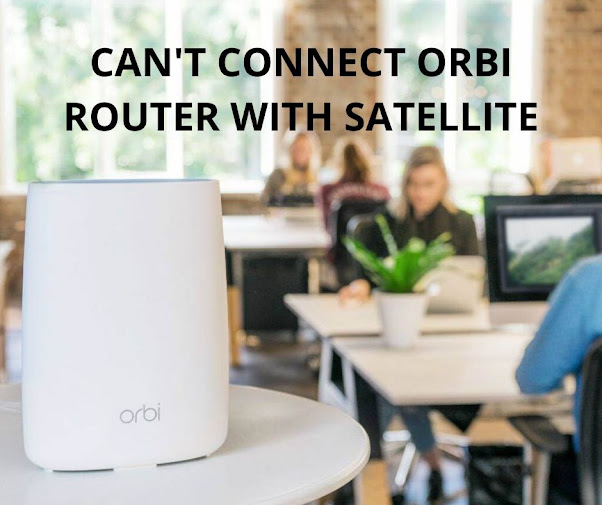Netgear Orbi Setup with an Existing Router: Seamless Integration for Enhanced Wi-Fi Coverage
Expanding your Wi-Fi coverage and improving network performance is a common goal for many homeowners and businesses. Netgear Orbi offers a powerful solution with its mesh Wi-Fi system, which can be easily set up alongside an existing router. This article will guide you through the process of integrating a Netgear Orbi system with your current router, allowing you to enhance your Wi-Fi coverage without replacing your existing network infrastructure.
Orbi setup with existing router
Steps of Orbi Setup with an Existing Router
What’s the point of an Orbi Mesh Wi-Fi if you already have an ISP Router.
Tips for setting up Netgear Orbi with an existing router
Understanding the Netgear Orbi Mesh Wi-Fi System: The Netgear Orbi mesh Wi-Fi system consists of a primary router and satellite units that work together to create a seamless wireless network. The primary router connects to your existing router, while the satellites expand the Wi-Fi coverage throughout your home or office. This setup ensures a strong and consistent signal, eliminating dead zones and providing a reliable connection in every corner of your space.
Step-by-Step Guide for Netgear Orbi Setup with an Existing Router:
- Evaluate Your Network Setup: Before proceeding with the setup, assess your current network configuration. Identify the primary router, which is typically provided by your internet service provider (ISP). This router serves as the main gateway to the internet and manages your network settings. Take note of the IP address, username, and password of your existing router, as you may need these during the Orbi setup process.
- Unpack and Connect the Orbi Router: Unbox your Netgear Orbi router and connect it to a power source. Use an Ethernet cable to connect one of the LAN ports on your existing router to the WAN (Internet) port on the Orbi router. This connection establishes a bridge between the two routers, allowing them to work together seamlessly.
- Power Up the Orbi Satellite(s): If you have additional Orbi satellites, place them strategically throughout your space to extend Wi-Fi coverage. Ensure that each satellite is within range of the primary router and that they are connected to power sources.
- Establish Connection with the Orbi Router: Using a device connected to your existing router’s network (via Wi-Fi or Ethernet), open a web browser and enter “http://orbilogin.com” or “http://192.168.1.1” in the address bar. This will take you to the Orbi router’s setup page.
- Configure the Orbi Router: Follow the on-screen instructions to configure the Orbi router. You may be prompted to create a new username and password for the Orbi system. Provide the necessary details, including network name (SSID) and password, to set up your Orbi network.
- Connect Orbi Satellites (if applicable): If you have Orbi satellites, follow the instructions provided with the Orbi system to sync them with the Orbi router. This typically involves pressing the sync or pairing button on the satellites and the router to establish a secure connection.
- Optimize Network Settings: Once the Orbi system is set up and connected, access the Orbi router’s settings page to fine-tune your network settings. Customize Wi-Fi settings, such as network names and passwords, and explore additional features like guest networks and parental controls. You can also update the firmware of your Orbi system to ensure you have the latest enhancements and security patches.
- Enjoy Expanded Wi-Fi Coverage: With the Netgear Orbi system seamlessly integrated with your existing router, you can now experience enhanced Wi-Fi coverage and improved network performance throughout your home or office. Enjoy a seamless and reliable connection in every corner, eliminating dead zones and ensuring a smooth online experience.
Conclusion: Integrating a Netgear Orbi system with an existing router offers a convenient and effective way to enhance your Wi-Fi coverage without the need to replace your current

Comments
Post a Comment